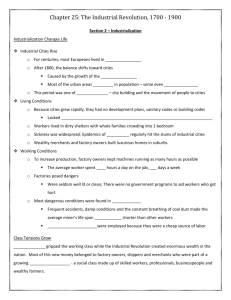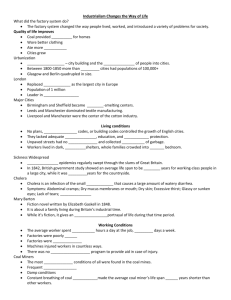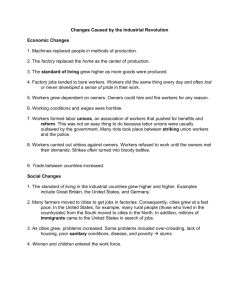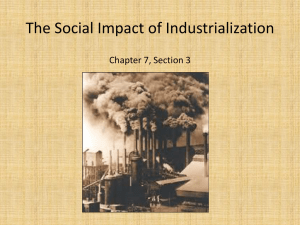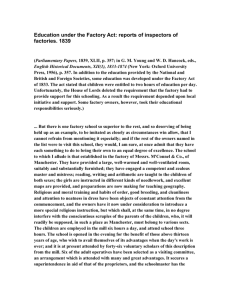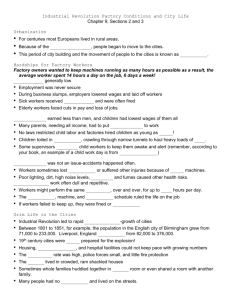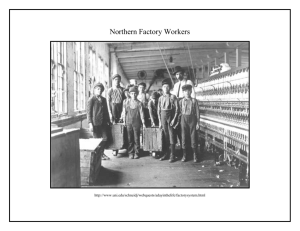File
advertisement
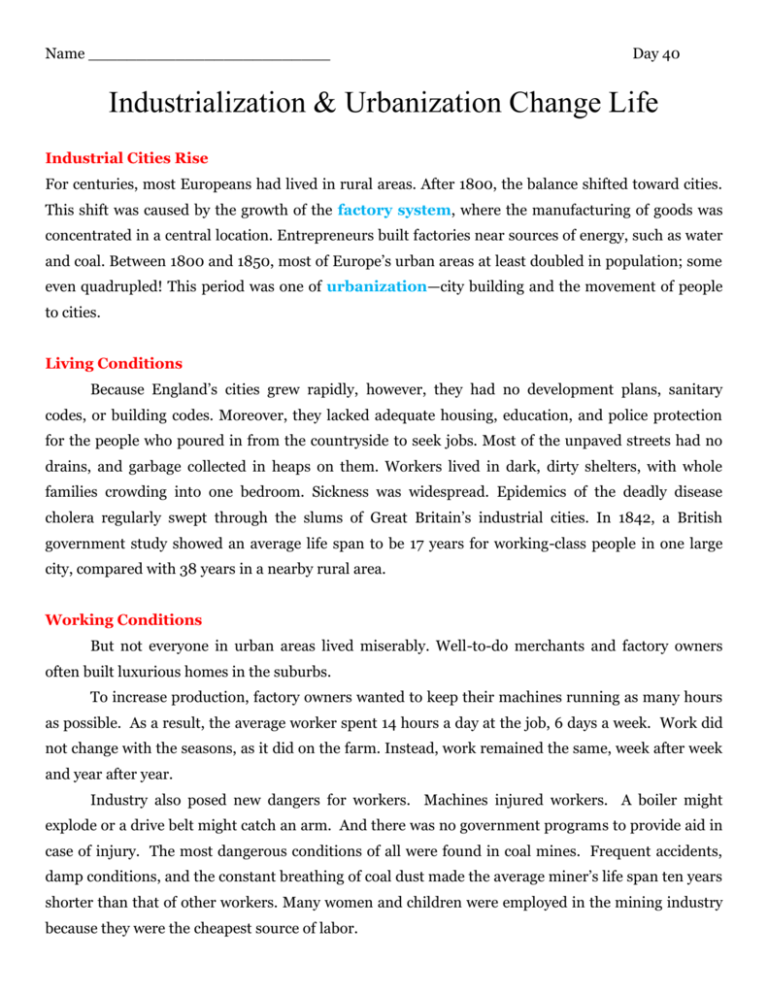
Name _________________________ Day 40 Industrialization & Urbanization Change Life Industrial Cities Rise For centuries, most Europeans had lived in rural areas. After 1800, the balance shifted toward cities. This shift was caused by the growth of the factory system, where the manufacturing of goods was concentrated in a central location. Entrepreneurs built factories near sources of energy, such as water and coal. Between 1800 and 1850, most of Europe’s urban areas at least doubled in population; some even quadrupled! This period was one of urbanization—city building and the movement of people to cities. Living Conditions Because England’s cities grew rapidly, however, they had no development plans, sanitary codes, or building codes. Moreover, they lacked adequate housing, education, and police protection for the people who poured in from the countryside to seek jobs. Most of the unpaved streets had no drains, and garbage collected in heaps on them. Workers lived in dark, dirty shelters, with whole families crowding into one bedroom. Sickness was widespread. Epidemics of the deadly disease cholera regularly swept through the slums of Great Britain’s industrial cities. In 1842, a British government study showed an average life span to be 17 years for working-class people in one large city, compared with 38 years in a nearby rural area. Working Conditions But not everyone in urban areas lived miserably. Well-to-do merchants and factory owners often built luxurious homes in the suburbs. To increase production, factory owners wanted to keep their machines running as many hours as possible. As a result, the average worker spent 14 hours a day at the job, 6 days a week. Work did not change with the seasons, as it did on the farm. Instead, work remained the same, week after week and year after year. Industry also posed new dangers for workers. Machines injured workers. A boiler might explode or a drive belt might catch an arm. And there was no government programs to provide aid in case of injury. The most dangerous conditions of all were found in coal mines. Frequent accidents, damp conditions, and the constant breathing of coal dust made the average miner’s life span ten years shorter than that of other workers. Many women and children were employed in the mining industry because they were the cheapest source of labor. 1. What were the results of England’s rapid urbanization during the Industrial Revolution? 2. Did everyone in urban areas live miserably during this time? Explain: Class Tensions Grow The Middle Class Though poverty gripped Britain’s working classes, the Industrial Revolution created enormous amounts of wealth in the nation. Most of this new money belonged to factory owners, shippers, and merchants. These people were part of a growing middle class, a social class made up of skilled workers that enjoyed a relatively comfortable standard of living. The middle class included factory owners, factory managers, bankers, professionals, business-people, wealthy farmers, government employees, doctors, and lawyers. As the middle class grew, they were able to wield more social and political power. The Working Class During the years 1800 – 1850, however, laborers, or the working class, saw little improvement in their living and working conditions. They watched their livelihoods disappear as machines replaced them. In frustration, some smashed the machines they thought were putting them out of work. One group of such workers was called the Luddites. They were named after Ned Ludd, who was said to have destroyed weaving machinery around 1779. The Luddites attacked whole factories in northern England beginning in 1811, destroying laborsaving machinery. Outside the factories, mobs of workers rioted, mainly because of poor living and working conditions. 3. Why would the working class be so upset with the introduction of new machines to the factory system? 4. Who were the Luddites and what did they do? 5. Overall, describe the difference in quality of life between the middle class and the working class during the Industrial Revolution in England.


